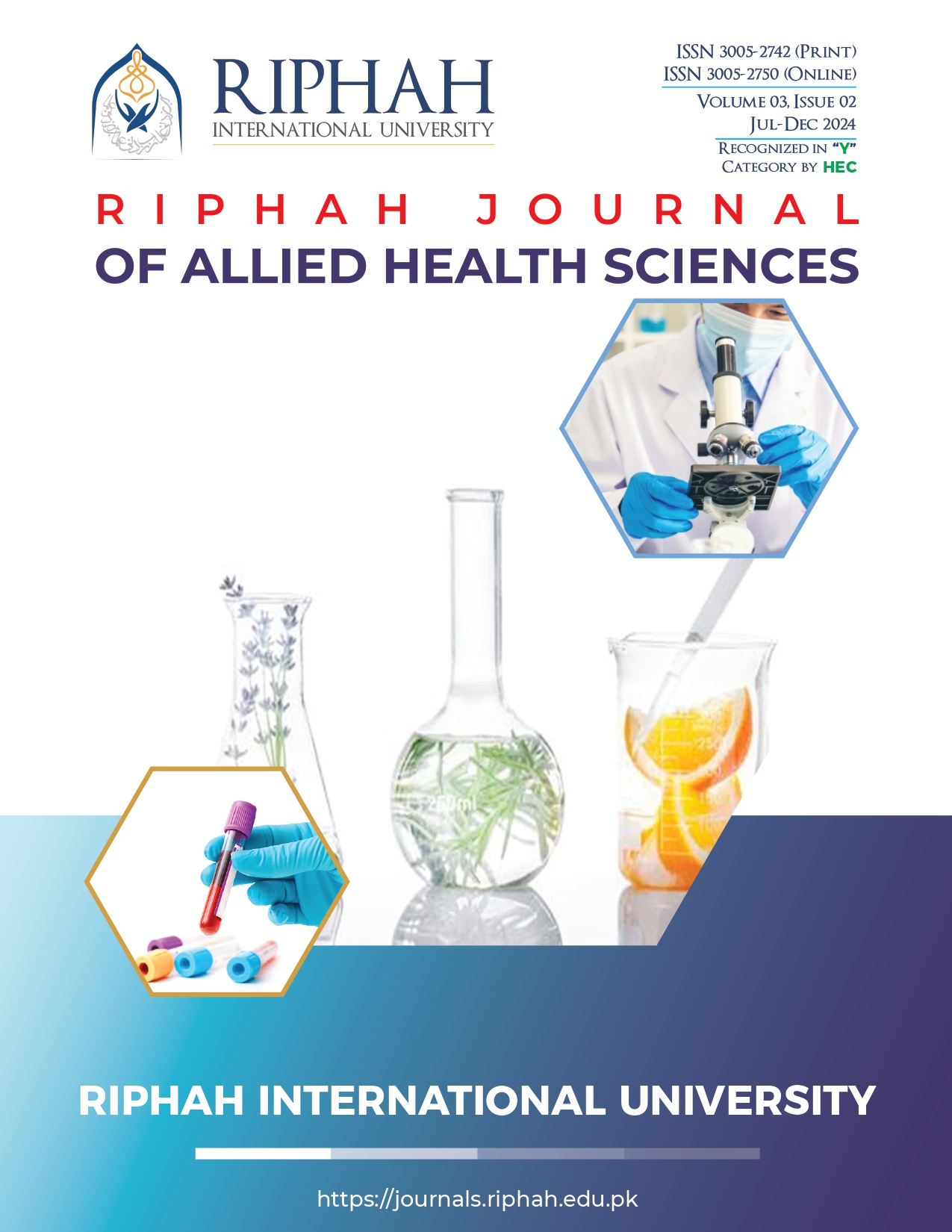Microbiological, heavy metal and antioxidant analysis of some commonly used spices in Pakistani cuisine
Keywords:
spice contamination, atomic absorption spectroscopy, antimitotic activity, Fourier transformed infrared spectroscopyAbstract
Background: Spices have been an integral part of global cultures for centuries not only in the culinary world, but also in medicine, beauty products, and traditional healing. In Pakistani cooking, they're indispensable not only for their deep flavors and tantalizing aromas, but also for their role in preserving food.
Methodology: In this study we investigated the microbiological quality, presence of heavy metals, and antioxidant potential of some selected spices from local market namely, S and N. Fourteen samples of spice, such as chili, turmeric, chicken tikka masala, garam masala, korma masala, biryani masala, and chat masala were analyzed for microbial contamination.
Result: Microbiological analysis revealed varying colony-forming units (CFU/ml) across samples, with chicken tikka masala from S exhibiting the highest CFU/ml (6×10^5). Gram staining and spore staining indicated dominance of gram-positive and spore producing bacteria, while no Gram-negative bacteria were detected. Fourteen bacterial strains showed resistance to chromium and lead salts, with strain N6 displaying the maximum resistance (MIC for chromium: 3500µg/ml; lead: 3900µg/ml). Atomic Absorption Spectroscopy revealed elevated lead and chromium levels in the spice (NT) sample (average concentration: 2.40 ppm; 0.78 ppm). Antibacterial activity was observed (9 mm), highest in isolate N6. Exopolysaccharides (EPS) production analysis indicated biofilm-forming potential, confirmed by the ring test. SEM and FTIR analysis of N6 strain showed EPS presence and functional group diversity. 16S rRNA analysis identified the strain as Bacillus sp. Phytochemical analysis revealed the presence of beneficial plant compounds, and antioxidant assays indicated varying levels among spices, with N3 (N biryani masala) exhibiting the highest 77.19% DPPH value, N1 (N korma masala) showing the highest 88.22% FRAP value, and S5 (S biryani masala) displaying the highest total 83.95% phenolic content.
Conclusion: In conclusion, Turmeric Powder (NT) exhibited the highest antibacterial, antioxidative, and antimitotic potential among all the tested extracts of selected spices. Future research could focus on isolating and modifying the phytochemicals responsible for these activities for potential pharmacological applications.


